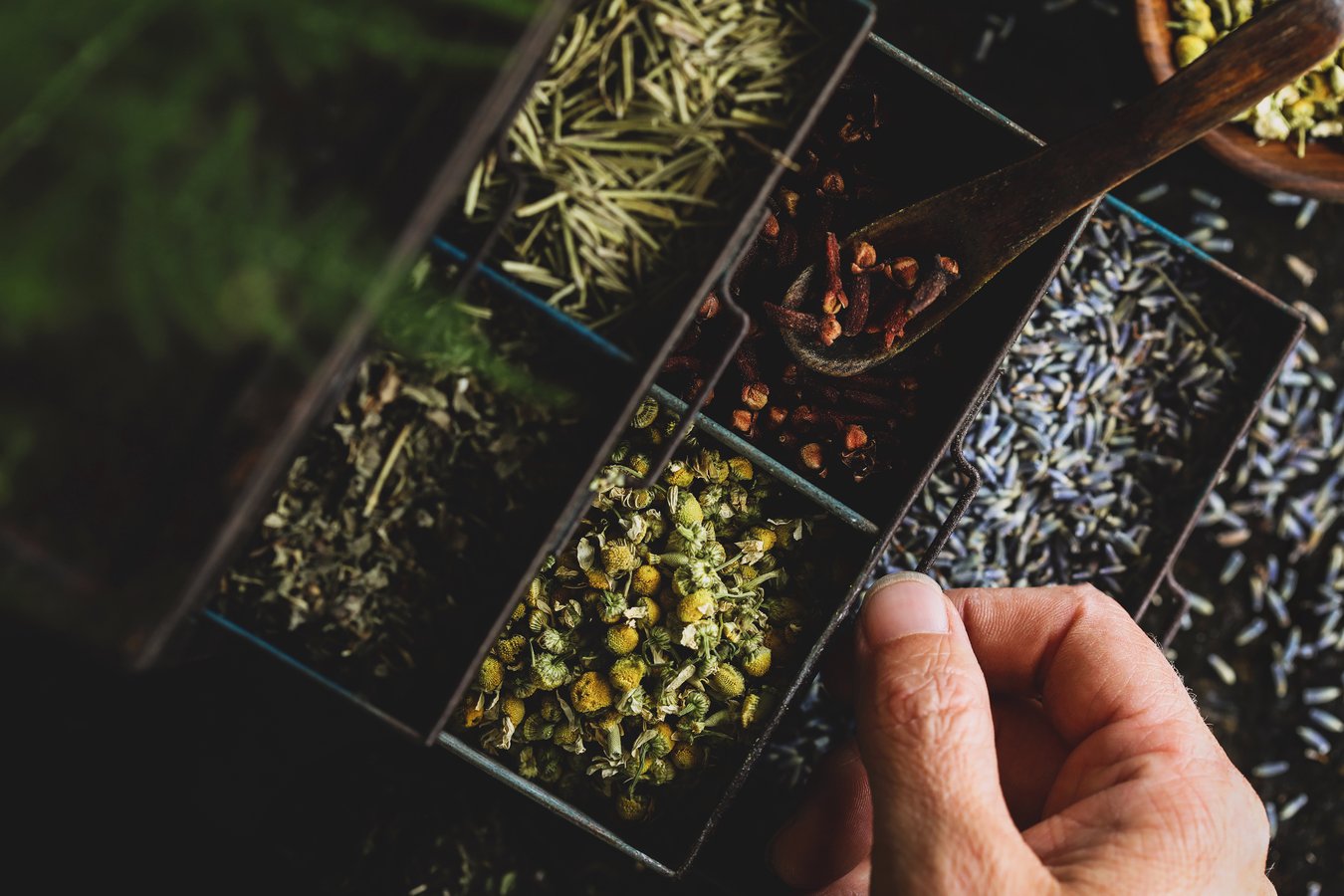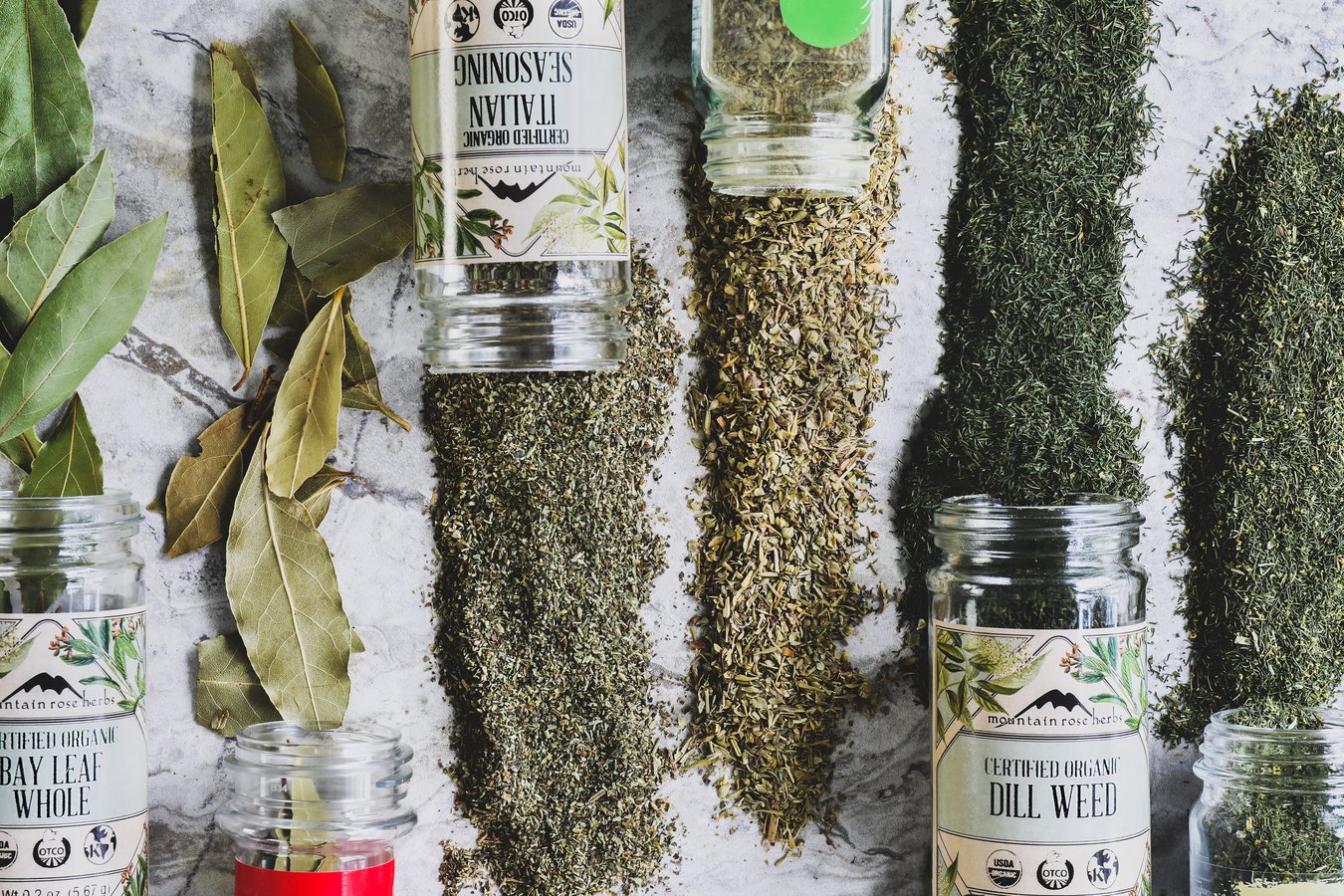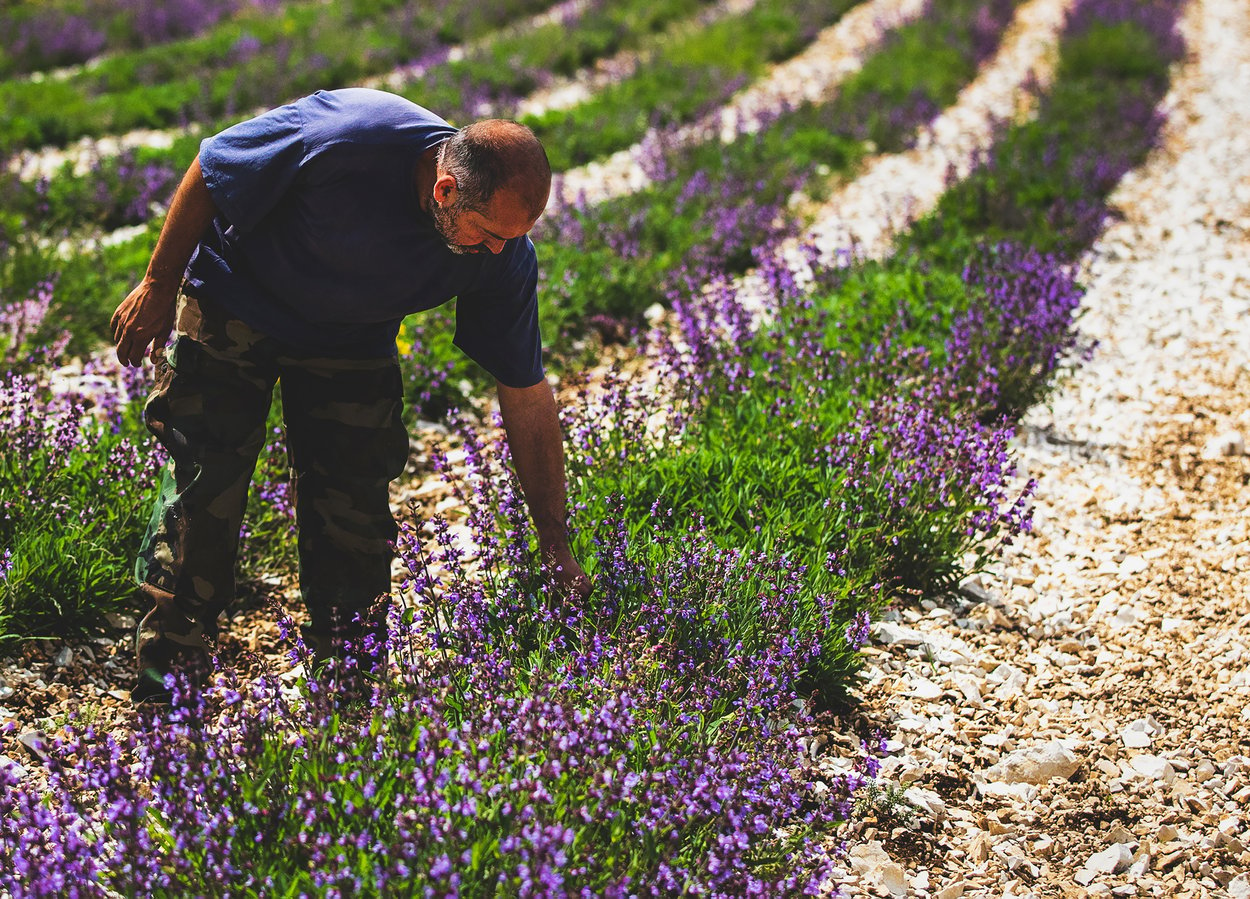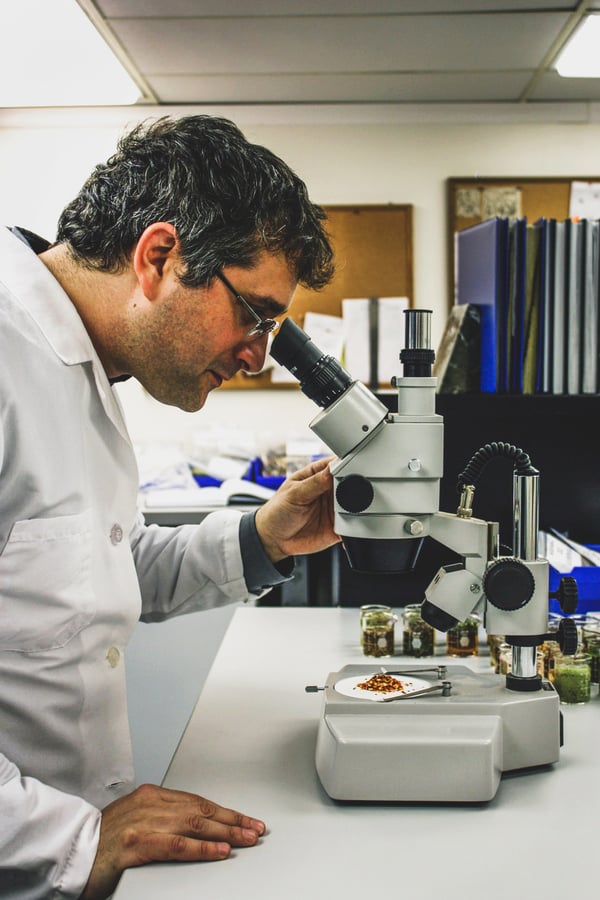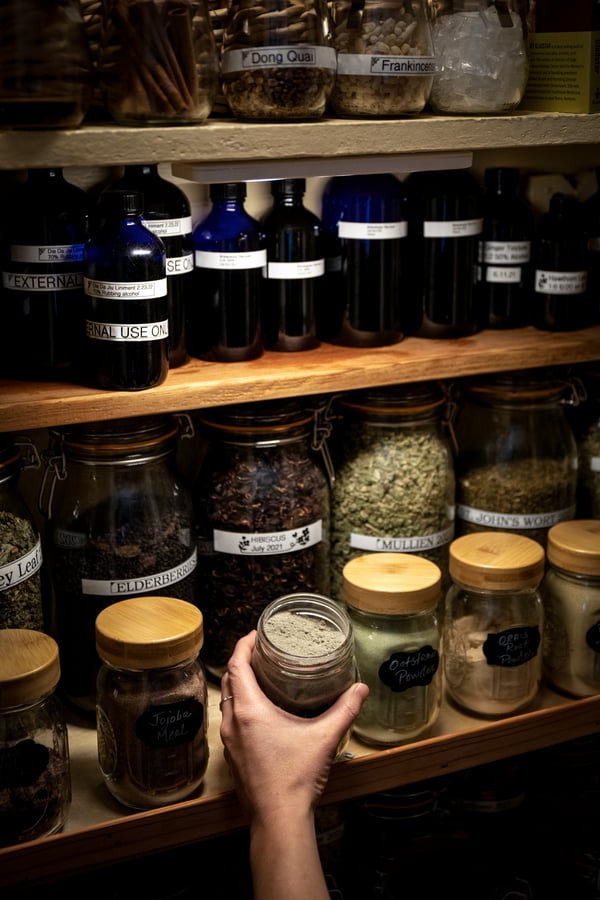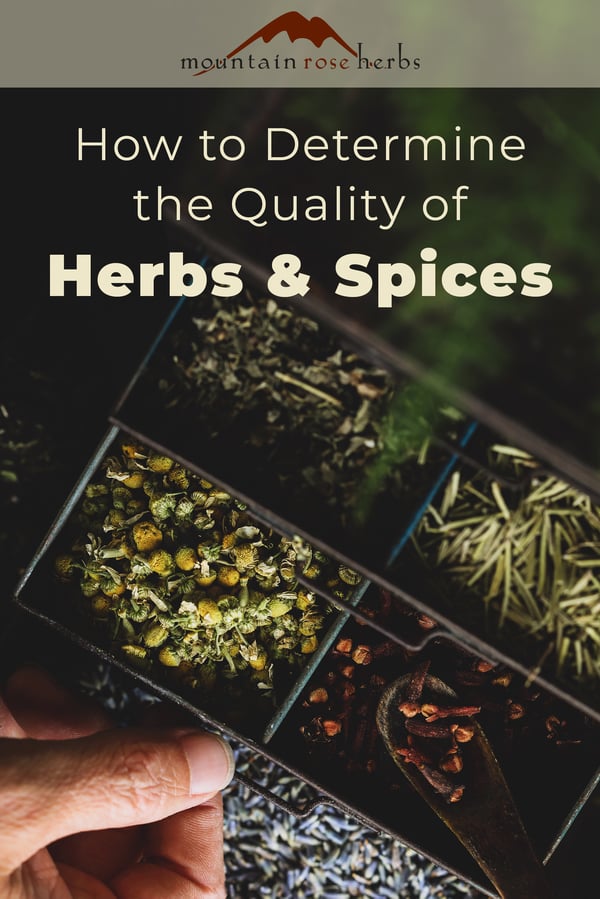Recently, as I was making soup with my three-year-old granddaughter and teaching her to pronounce galangal root, I found myself in an extended game of “name that spice.” It turns out you can get through an entire elaborate Thai soup recipe with a toddler in this way; I highly recommend it. It goes something like this: Cute toddler points at spice jar and asks, “What is that spice?” Adult says, “Paprika. Smell it, what do you think?” Cute toddler makes funny face and spies another spice that looks similar. “Is that paprika too?” Adult is impressed. “Good eye, that’s smoked paprika. Does it smell different?” And on it goes like that through the colored jars. In this way, I was reminded that I have so many jars of excellent dried herbs and spices and it’s definitely time to check them for freshness.
Before the advent of the internet, most of us had to rely on whatever herbs and spices we could find at our local grocery store. The problem is that supply chain is really opaque. Spices and herbs are most often grown, harvested, dried, processed, and shipped to North America from abroad. By the time they get sealed into a bottle and put onto a store shelf here, we can’t know the origin, quality, or age of what we are purchasing. Many of these products misleadingly say “packaged in the USA,” which tells us nothing about where or how it was grown or how it was handled en route to that USA package.
It’s not just the initial quality and flavor of a spice or herb that is impacted by this game of chance, it also directly affects the shelf life. Higher-quality botanicals retain flavor longer than lower-quality ones.
Side by side photo of Mountain Rose Herbs' fresh organic spices next to commercially available ones.
Make Sure You Trust Your Herbs & Spices Brands
The best quality, freshest dried botanicals give better flavor and nutrient value, but there is another issue that makes it even more imperative to know the source of your herbs and spices. They can be full of heavy metals, including arsenic, cadmium, and lead!
According to a 2021 Consumer Reports study—in which they did extensive testing on 15 types of dried herbs and spices, including 126 different products from national and private-label brands* sold in stores across the nation— “roughly one-third of the tested products, 40 in total, had high enough levels of arsenic, lead, and cadmium combined, on average, to pose a health concern for children when regularly consumed in typical serving sizes. Most raised concern for adults, too.” 31 of those products had lead levels that “exceeded the maximum amount anyone should have in a day.” Oregano and thyme were particularly worrisome because 100% of the products tested showed “concerning” levels of heavy metals.
Heavy metals can get into our foods via water and soil, either from natural occurrences or because of contamination from pesticides or industrial runoff. They can also be introduced into herbs and spices during the manufacturing process when they are ground or packaged. The amount that each plant absorbs differs, and the good news is that most (two-thirds) of the tested herbs and spices were completely safe. According to James E. Rogers, Ph.D., Consumer Reports’ Director of Food Safety and Testing, the way to limit our risks is to purchase our herbs and spices carefully.
Testing is Key to Safety and Quality
The Food and Drug Administration (FDA) has not set limits on heavy metals in food except in a few cases like arsenic in rice cereals for infants. They randomly test herbs and spices shipped to the U.S. and if they identify a health risk, they will block future products. But the testing that the FDA does is generally focused on harmful bacteria, not heavy metals, particularly in spices. At the time of the Consumer Reports study, approximately 24 companies from 11 countries were subject to import alerts for lead contamination. Products listed as “organic” did not fare better in the study. It turns out that the United States Department of Agriculture, which oversees organic standards, does not include heavy metal testing, so there is little federal oversight of heavy metals in the organic herb and spice market.
Consumer Reports is currently petitioning the FDA for stricter limits and better oversight on heavy metals in our food. You can add your name to the petition here.
What all of this means for you and me today is that the lack of federal testing puts the responsibility for heavy metal testing on the U.S. herb and spice companies that Americans purchase from. The FDA requires businesses like Mountain Rose Herbs to periodically perform a risk assessment on their products, which is supposed to include testing for “chemical hazards” like heavy metals. However, of the companies in the Consumer Reports study, only three actually tested their botanical products themselves to ensure food safety.
How Mountain Rose Herbs Tests our Botanicals
Mountain Rose Herbs has spent more than three decades establishing working relationships with trusted farm partners to ensure they are doing everything in their power to provide the healthiest botanicals. This means we have much more transparency in the supply chain, from farm to bottle. We know who grows our herbs, where they were grown, and we have a say in the harvesting and processing protocols so that we can better guarantee food safety and quality.
We recognize, however, that it is still on us to assure our community that we are selling products that are safe, unadulterated, and exactly as listed on our website. For this, we rely on our quality control laboratory. We were one of the first herbal products companies in the nation to establish an in-house lab of experts to test the botanicals we sell. If any material fails to meet our specifications, it is rejected.
Our full-time lab technicians test our botanicals to ensure they meet our strict specifications and are free of adulterants and contamination. Our herbs and spices are put through identity testing, moisture percentage and water activity analysis, macroscopic and extraneous matter analysis, microbiological testing, and chemical testing. If an herb or spice is deemed a risk for sulfites or heavy metals, it is also put through sulfite and heavy metal testing. The results are documented in a Certificate of Analysis, which shows the specifications the botanical must meet and the results of the tests. You can request a Certificate of Analysis (COA) as well as other quality control documents on any botanical you purchase from Mountain Rose Herbs. Note that if an herb or spice was not deemed a risk for heavy metals (that’s 2/3 of botanicals), and was therefore not tested, you will not see test results on the COA. If you’d like to request a Certificate of Analysis or other documents when you make your next purchase, let us know in the Special Instructions field during the checkout process or by calling or emailing our customer service team.
As our Director of Quality and Regulatory Affairs, Steven Yeager, says, “Many of us [at Mountain Rose Herbs] are herbalists, and we refuse to sell products that we wouldn’t want to use ourselves.”
Best Way to Store Spices and Herbs & How to Test for Freshness
High-quality dried herbs and spices, when stored correctly, have a fairly long lifespan. On average, whole spices will stay fresh for four to five years, ground spices for two or three years, and dried herbs for one to three years.
Store dried herbs and spices in airtight glass jars away from heat, temperature fluctuations, and direct sunlight. As tempting as it is to have them close to the stove, that heat will ruin even the highest quality botanicals. For long-term storage, find a cool, dark storage space or put them in their containers in the refrigerator or freezer.
We’ve all bought an herb or spice and then it got pushed to the back of the cupboard, only to be rediscovered years later. How do you know if it is still good?
- Open the container and look at the spice or herb. Is it still the color it was when you bought it? Green, leafy herbs will usually fade as they age. Red- and orange-colored spices like paprika, pumpkin pie spice, and chili powders will turn brown. Other spices may darken as they go stale.
- Crush or rub some in the palm of your hand and smell. The aroma should hit your nose immediately and smell full and potent. Note that you have to break or crush cinnamon sticks and peppercorns to release the full fragrance.
- Taste a pinch of the dried botanical. If it doesn’t have much flavor, it may be stale.
How to Revive Herbs and Spices That Have Lost Their Pizazz
Sometimes in a pinch, you can bring some life back into stale herbs and spices.
- If they’re just slightly stale, you can increase the quantity you would normally use in a recipe to get the same result. For instance, one teaspoon can become one tablespoon.
- If you’re cooking a curry or stew, you can fry aromatic spices like curry powders and cumin in hot oil right before cooking with them. When they heat, they will release more aroma and flavor. Then add to the dish you are preparing and cook as normal.
- Five spice blends, curry powders, pepper, etc. can also be revived by putting them in a dry skillet set over medium-low heat. They can burn easily, so stir constantly. Toast for just a couple of minutes, until the aromas are fragrant again, then add to the dish you are preparing.
- Aromatic herbs like ginger, cloves, or cinnamon are often still good for infusing in culinary oils. If they are not already in powdered form, grind them to release the most flavor and aroma.
*Mountain Rose Herbs was not part of the Consumer Reports study.
Is your herb or spice too far gone to save for cooking?
Try These 10 Creative Things to do with Old Spices and Herbs!
You may also enjoy:
- Why We Go Out of Stock
- How to Substitute Fresh Herbs for Dried Herbs
- How to Clean & Reuse Essential Oil Bottles, Dropper Bottles & Other Empty Containers

